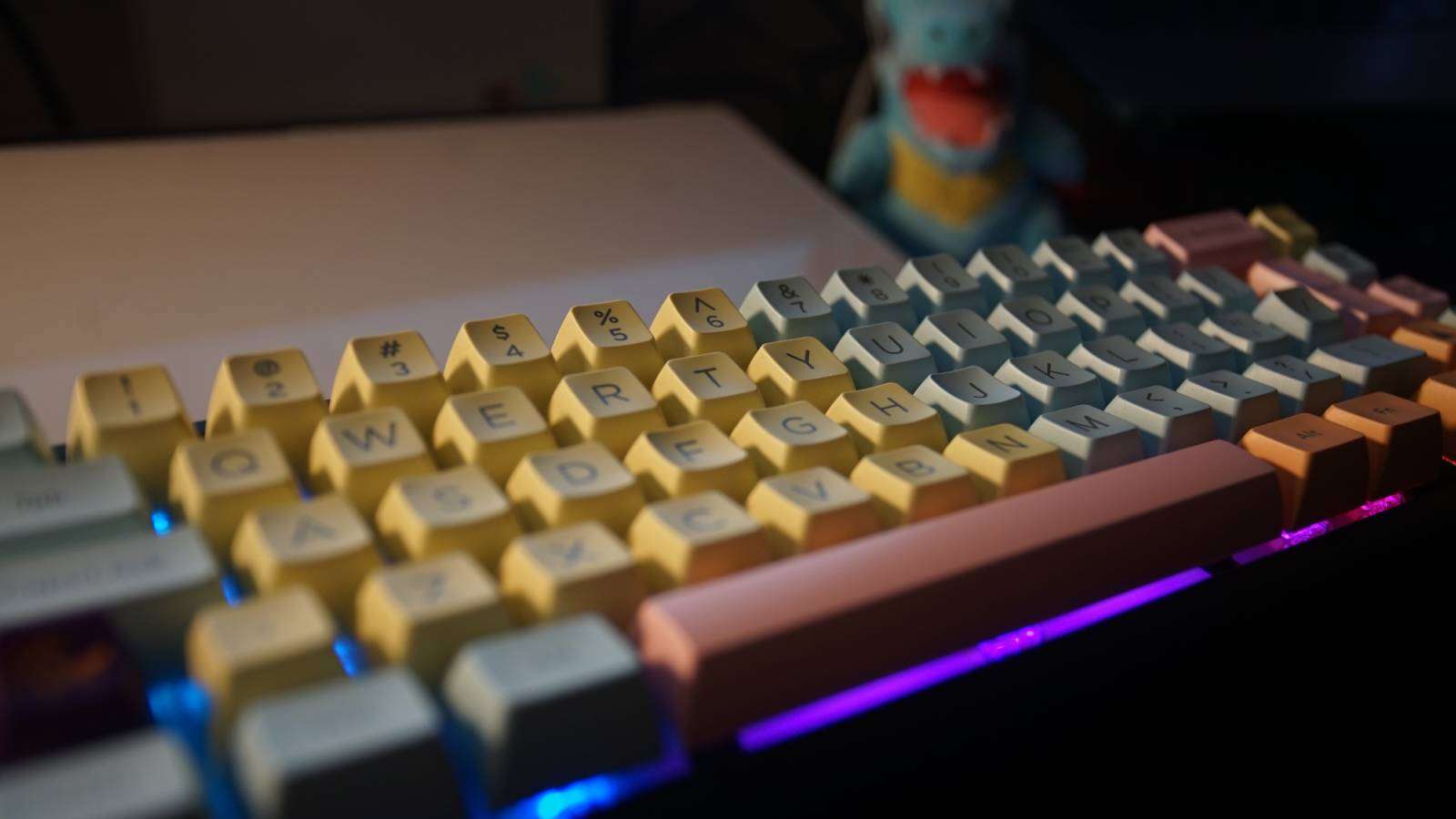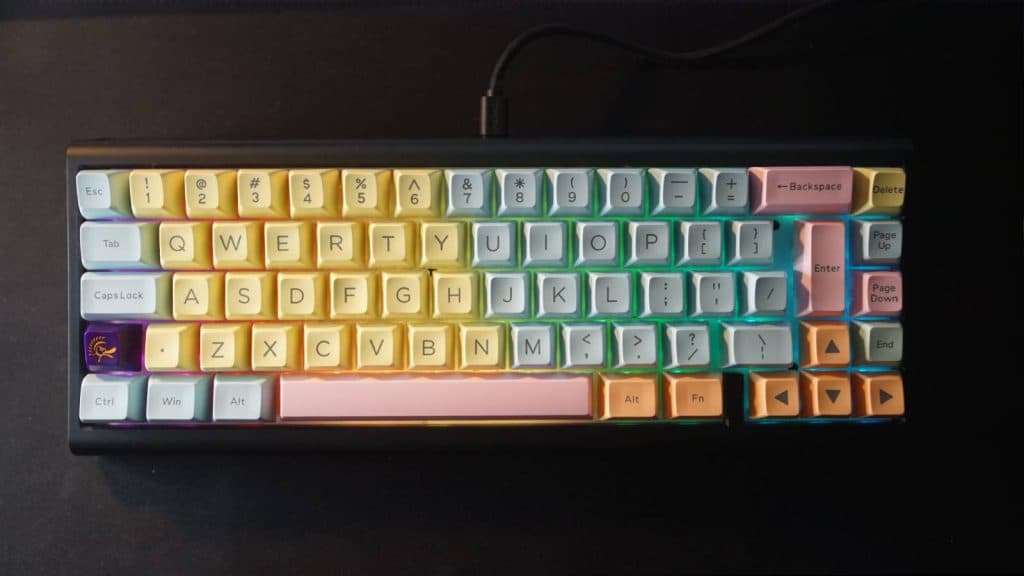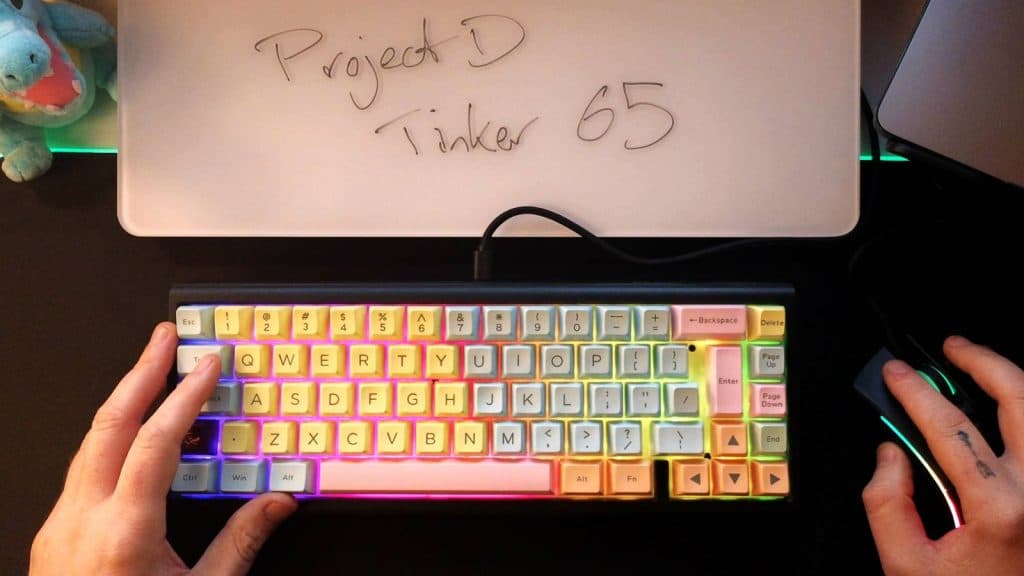Ducky ProjectD Tinker 65 review: Capable & very customizable
 Dexerto
DexertoA new entry in the ProjectD range aims to bring mechanical keyboards to the masses with a smaller budget-friendly release. So, can the Tinker 65 deliver the performance it promises?
While smaller keyboards fit much easier into everyday life, depending on what you need from them, they can often feel like a compromise. Well, in comes Ducky with the ProjectD Tinker 65, aiming to bring an affordable mechanical keyboard to the mainstream tech market.
The Ducky ProjectD Tinker 65 promises to pack a lot into a small package, and while it’s cheaper than some of its contemporaries, there’s still a substantial price tag behind that name.
If anything, the Tinker 65 seems to evoke simplicity, billing itself as a great mechanical keyboard for beginners, only to get you hooked and need bigger and better keyboards down the line. So is it good enough to draw in the casual audience?
Key Specs
- Switch type: Gasket Mount
- Keycaps: Hot-swappable
- Connectivity: USB-C/USB-HID 1000Hz
- Form Factor: 65%
- Lighting: RGB LED backlight
- Features: Three-stage keyboard stand, programmable with QMK and VIA
- Price: Barebone Custom Keyboard $89.99
- Dimensions: 320mm X 125mm X 40 mm – 590g
Design
 Dexerto
DexertoWe were sent the Ducky ProjectD Tinker 65 with a white body, black accents on the edge of the frame, and the Cotton Candy keycaps. Considering the small size, the Tinker 65 has a nice heft to it, and a slick rectangular profile.
There are two folding legs underneath the device, which offer a bit of maneuverability so you can find your perfect comfort angle when typing. Plus, the device features an RGB backlight underneath the keycaps, with which you can adjust the brightness, speed, and pattern to your tastes.
Simply as a device on your desk, the Tinker 65 is a really good-looking keyboard, managing to cram a lot into a small space, but making the most out of that smaller form factor.
The keys themselves are a gorgeous pastel color, that works well alongside the RGB (though I did have to tone it down from rave to gentle Christmas lights), and of course, you can choose the best keycaps for your home office design, with a huge range available online.
While some keyboards are gaudy, or obsessed with maximalism or ‘gamer‘ touches like weird edges and overt logos, the ProjectD Tinker 65 is a fairly unassuming keyboard, that you can customize with to your heart’s content.
I was really pleased with the design of the keys, and the slick form factor of the keyboard itself, and once I found an RGB profile that didn’t make me feel nauseous, I was really happy with the subtle light display adding colorful energy to this sleek device.
Features
Some of the main selling points of the Ducky ProjectD Tinker 65 include the aforementioned RGB lights, the adjustable stand, the gasket mount technology, mechanical switches, a polling rate of up to 1000hz through USB 2.0 wired connection, and customization options via QMK/VIA.
In short, this is a very responsive device and a dependable one at that. I’ve been using it for weeks, and compared to previous keyboards, the keys themselves give a nice bouncy reaction with too much noise, and I’ve had very little in the way of missed inputs to mistakes.
Similarly, when it comes to gaming this keyboard has a fantastic response time. Yes, with the smaller 65 form factor, you don’t have access to some individual keys like F1, but that didn’t get in the way of gameplay too much. Still, if you want the best keyboard for Counter-Strike 2 or similar games, maybe consider looking at boards that incorporate Rapid Trigger functions.
Considering the aim of the Tinker 65 is to create a slim keyboard with a suite of professional features, I’d say it does a good job. It would be nice for there to also be some features such as a Bluetooth connection and a wider array of RGB options, but it does the job fairly well.
Performance
 Dexerto
DexertoI’ve been using the Ducky ProjectD Tinker 65 for just over a month, and while it’s been a positive experience, I have also come across a few issues that give me reason to pause when trying to recommend it.
Installing the keycaps is fairly simple, and the ability to tear the keyboard down makes it a godsend for cleaning. Pulling keycaps and the mounts out with the included tools is simple and effective, and only once did I end up scratching a cap instead of doing what I wanted to.
One issue I have repeatedly run into is sticky keys. Whether just typing or gaming, I have on occasion, I’d say roughly once a week, had an issue where after pressing a key the command just continues to be pressed, leaving me a small army of “pppppppppppppp” in my copy, or something similar.
Every single time this has been a simple fix, as I’ve either unplugged and reconnected the USB C 2.0 cable (worked almost every time), or on one occasion I have taken off the keycap and replaced the mount, and then everything was golden.
Using the keyboard’s built-in commands to change the RGB can be a little tricky, and the online QMK/VIA customization options are not as user-friendly as this keyboard pretends to be.
Customizing your keycaps is remarkably simple, but if you want to personally program the inputs, both the QMK and VIA methods are laborious processes that assume a certain amount of knowledge. A YouTube video will only get you so far, and my attempts to swap some inputs were frustrating at best.
Should you buy it?
If you’re looking to upgrade your home office setup alongside some of the best tech of 2023, and maybe dip your toes into gaming with a keyboard and mouse, then the Ducky ProjectD Tinker 65 is a good entry into the of mechanical keyboards, just be prepared to work for the result.
The slim design and gorgeous keycaps are a great addition to a desk, and the response time is phenomenal for online gaming. However, this diminutive device is trying to pack a lot into a smaller package, so you may want to consider more premium products if you need other features.
Verdict: 4/5
The Ducky ProjectD Tinker 65 can be found as the barebones keyboard (without keycaps) for around $89.00, while Ducky keycaps will set consumers back around $40-50 depending on the set.
All things considered, around $120 for a fantastic compact keyboard is a good price, and the Ducky PorjectD Tinker 65 does deliver on its promise of an entry-level keyboard with some professional features. It might not be the best pick when trying to build the best gaming setup though.
I do wish some of the trickier elements were more consumer-friendly, and the smaller 65% form factor is always going to be missing some of the real estate that larger keyboards have, but it’s a gorgeous device that performs well under pressure. You just might love it as your first mechanical keyboard.
If you click on a product link on this page we may earn a small affiliate commission.


